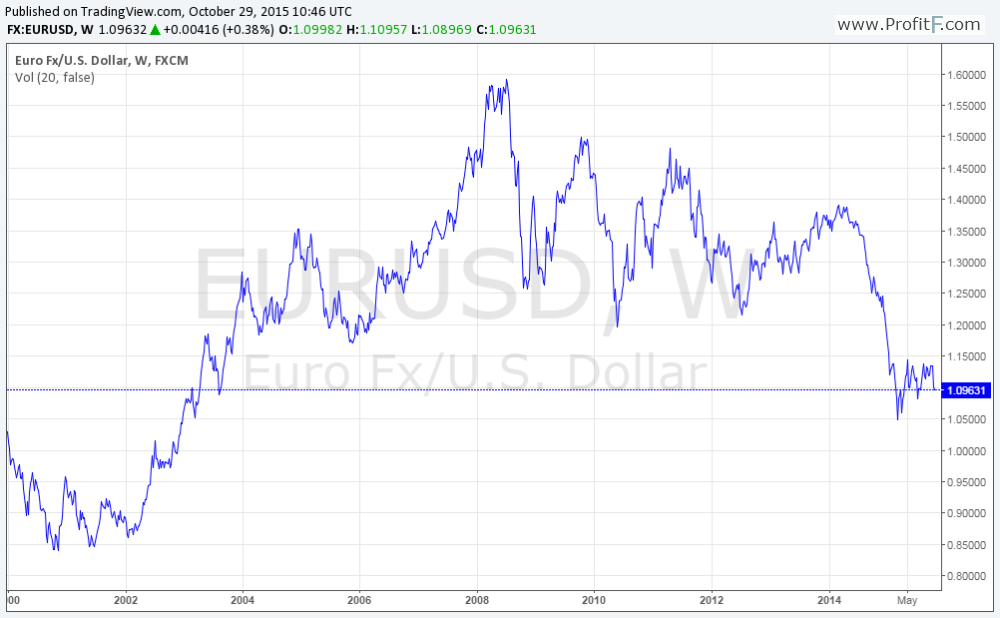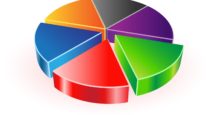Formation of the Euro
Seeds of the idea
The seeds of formation of the Euro can be dated back to 1929 when the idea was first floated by the then German foreign minister. But action towards the idea was only initiated in 1957 with The Treaty of Rome. This treaty set about gradually creating a common market for improving the economic condition of European nations. In 1970, the Werner Report suggested fixing of rates among the participating nations to control fluctuations.
The US abandoned the Gold standard in 1971 after the breakdown of the Bretton Woods system which led to upheavals in the currency market. This further delayed the plans of the European nations to come together. Finally in 1979, The European Monetary System was formed, which fixed exchange rates with an accounting currency called the European Currency Unit. However, the idea of a single currency and a central bank started only later in 1986 with the Single European Act.
The Maastricht Treaty
The Delors report of 1989 laid out concrete plans towards a central bank and monetary union. The three-phased plan started in 1990 with the liberalization of capital movements between the European Economic Community. The Maastricht Treaty of 1992 led to the formation of the European Monetary Union among its participating nations. A broad agreement was reached on the macroeconomic criteria needed to become a member of the union, called the Maastricht criteria. It finalized on creating a single currency for the European Union and launch it by 1st of Jan 1999, without the participation of the UK.
Finalizing the name
In 1995, the name Euro was suggested by the then German finance minister, Theo Waigel. The 11 countries which met the criteria to be a part of the European Union were finalized by 1998. In June 1998, the European Central Bank took over the European Monetary Institute and began its operations on 1 Jan 1999 with the introduction of the Euro.
Initial days of the Euro
The Euro was initially introduced only as a cashless currency in the form of travelers’ cheque, for bank transfers and electronic transfers etc. The currencies of the participating nations were fixed against the Euro.
Introduction of the Euro
Minting coins and Note printing
The minting of the coins and printing of notes started in 1998 but were only made available by 2002. Introducing a single currency throughout 12 nations had never been attempted before. A total of 38.2 billion coins and 7.4 billion notes were printed.
Educating the general public
Large scale preparations were made throughout Europe to educate the general public about the new currency. Various posters, playing cards and T-shirts were used to create awareness among the public about the designs of the Euro. Stamps bearing designs of both the local currency and the Euro were also released during this awareness program. By Dec 2001, starter kits were distributed to both the general public and the business owners. These kits had various denominations of coins and notes.
Euro as a single currency
In 1999, the banks started their back office operations in Euros, and all deposits and loans were accounted in Euros. However, the withdrawal and deposits continued in the local currency. From 2 Jan 2002 all ATMs started issuing Euros. All merchants accepted the local currency but returned change only in Euros. By end Feb 2002 all the Euro countries stopped their currency and adopted only the single currency, the Euro. Exchange of the local currency to Euros continued for some more time and is still ongoing in a few countries. Thus, a new currency took birth in Europe successfully without any major hiccups.
Historical Movement of the Euro against the USD
Since the beginning of its trading, Euro strengthened from a low of 0.85 to a high of 1.6 in a span of 8 years. However since the financial crisis, the Euro has given up its strength and is currently quoting at 1.09 levels.
The reasons for the rise of the Euro and its subsequent fall are:
Different studies suggest that with the creation of the Euro many Countries in the Eurozone have improved their businesses. After initial hiccups, the Euro started gaining against the US dollar and the trend continued throughout 2000-2008.
The SubPrime crisis
During the same period, the US Fed had an expansive monetary policy which likely led to the subprime crisis and the bubble burst in 2007. Initially, it was expected that the Euro will be untouched by the crisis. But by 2008 it dawned upon the world that the financial crisis was too big to be contained within the US, its effects started showing on the Eurozone nations as well. This led to the subsequent fall in the Euro and ever since the fall the Euro remained in a trading range until the Greek crisis when it fell closer to parity with the US dollar.

Main components of the Euro
There are 29 European nations out of which 19 nations have fulfilled the criteria to join the Euro. A few other nations have accepted the Euro but have not fulfilled the criteria to join the Euro officially. Other than Denmark and UK other nations can join if they meet the criteria.
The major nations which contribute to the Eurozone are Germany at 28%, France at 21.5%, Italy at 16% and Spain at 10%. These four nations cumulatively contribute more than 75 of Euro GDP. A close watch on the economic health of these nations will be useful in understanding the health of the Euro.
Stability issues regarding the continuation of the Euro
The experiment of having a common currency without centralized political authority was seriously challenged with an increased probability of a Grexit. Though the monetary policy is central, each country has its own fiscal policy and economic policy. The countries can at times violate the centralized policies and cause undue stress on the whole Euro group, as seen in the case of Greece.
Though technically Greece is too small to cause any major damage to the Euro, the sentimental damage is large. If any nation were to break away from the Euro group and survive, it will pave way for the other struggling nations like Portugal and Spain to rethink their place in the Euro. This is a serious threat to the stability of the Euro.
Euro gaining popularity over the years
Though being the youngest among the reserve currencies in the world, the Euro has caught on with many other currencies. According to the Wikipedia, the Euro is the second most traded currency by value at 33.4% trailing only to the US dollar at 87%. The Euro holds 20.5% share in the foreign exchange reserves of various nations and Central Banks.
Euro in Forex Trading
The symbol of the Euro is € and is denoted as EUR in the Forex markets. The EURUSD is the most popular trading currency pair in the world. The US dollar index is also heavily correlated to the Euro.

Conclusion
The Euro continues to hold an important position in the currency market. The volatility in the Euro is also likely to continue with unprecedented monetary easing by the European Central Bank. The divergence with the US Fed raising rates, and the ECB enduring an easy monetary policy may cause volatility for the currency pair, in the days to come. (see on our website ECB meeting Calendar) Any turbulence in Greece is likely to add to the instability. The Euro nations have realized and accepted the problems of nations like Greece and are better equipped now to handle such situations. The European Union’s strategies to manage crisis will define the popularity of the Euro and its future.










Add your review